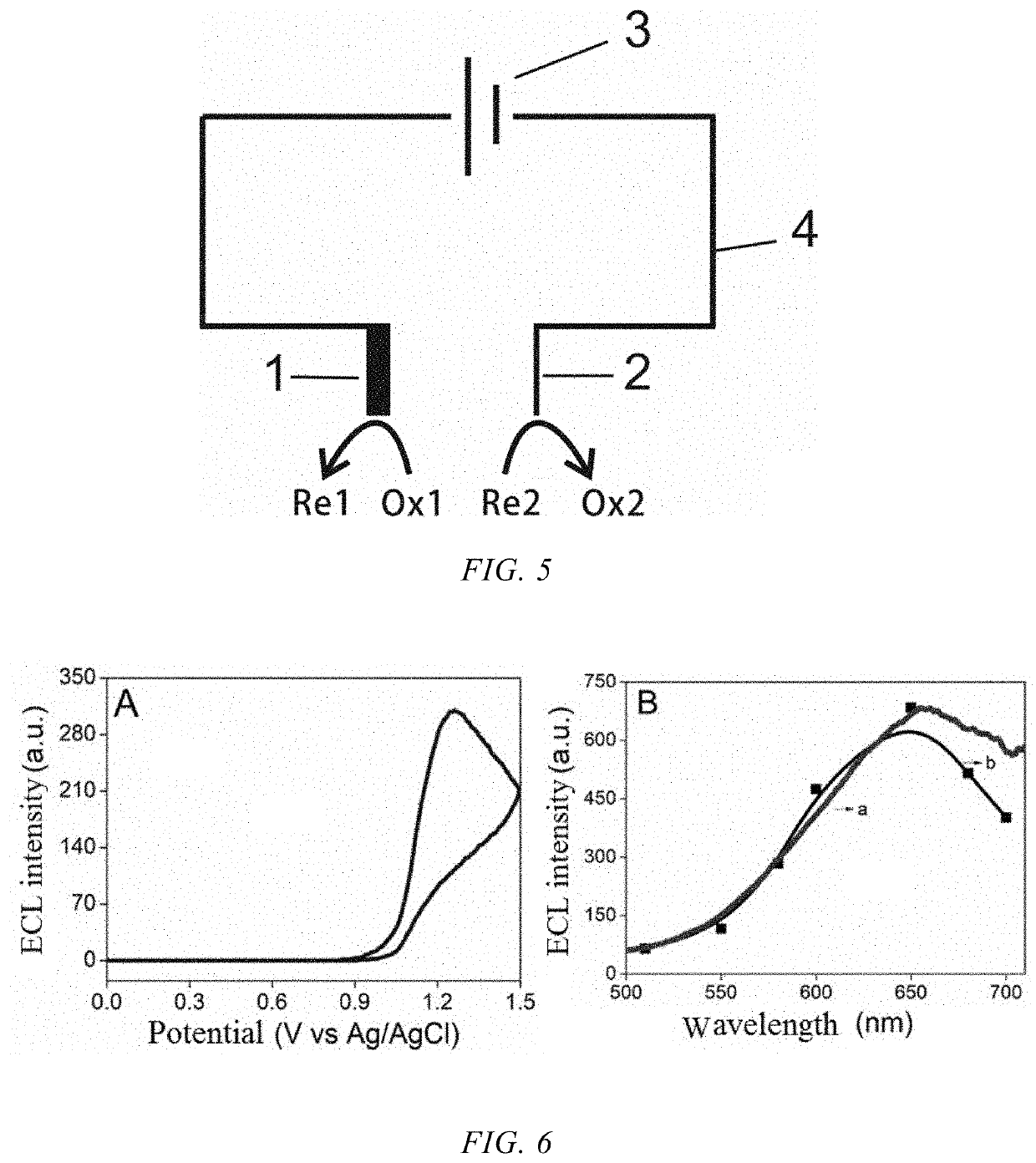Probe for detecting trace uranyl ions and portable ecl detector based on the same
a technology of trace uranyl ions and detectors, applied in the field of uranyl ion detection, can solve the problems of affecting the health of people, and inducing lung cancer, and achieves the effects of low biocompatibility, high detection limit, and large environmental impa
- Summary
- Abstract
- Description
- Claims
- Application Information
AI Technical Summary
Benefits of technology
Problems solved by technology
Method used
Image
Examples
example 1
[0056]This example provides a method for preparing an ATE-active conjugated polymer. The synthesis route was shown in FIG. 1. The specific steps were carried out as follows:
[0057]The synthesis of Compound 4 was as described in ACS Appl. Mater. Interfaces 2017, 9, 11546-11556. The synthesis of Monomer M-2 was as described in Polym. Chem. 2015, 6, 5070-5076.
[0058]Synthesis of Monomer M-1: Compound 4 (2.28 g, 3 mmol), Compound 5 (3.08 g, 12 mmol), potassium acetate (2.40 g, 12 mmol), and Pd(dppf)2Cl2 (0.3 g, 5% mmol) were dissolved in DMF (60 mL) and, heated to 120° C. under Ar atmosphere for 24 h. The reaction solution was poured into water (200 mL), and extracted with ethyl acetate. The organic phase was washed twice with water, and purified by column chromatography on silica gel (mobile phase, ethyl acetate:petroleum ether=1:30) to obtain the product (1.61 g, yield 64.0%). The NMR test results are shown below:
[0059]1H NMR (400 MHz, CDCl3) δ7.52 (d, J=8.1 Hz, 4H), 7.00 (d, J=8.1 Hz, ...
example 2
[0063]The present invention provides a method for preparing the probe for detecting trace uranyl ions, which includes the following steps:
[0064]The conjugated polymer prepared in Example 1 was dissolved in ethanol with a concentration of 0.15 mg / mL. Then the conjugated polymer solution (1 mL) was poured into water (10 mL), and the ethanol was removed by vacuum distillation to obtain an aqueous Pdots solution (10 mL).
[0065]A PEG aqueous solution (5% w / v), and HEPES buffer (1 M) were added to the aqueous Pdots solution (0.15 mg / mL), and then NH2-DNA (1 μM) and EDC (5 mg / mL) were added to the mixture and shaken for 0.5 h to obtain DNA-Pdots. The DNA sequence is: 3′-taa ttc tgt gta tgt gtc tgt-5′-NH2.
[0066]In this example, the base sequences in the DNA sequence can be selected randomly, and the DNA sequence can also be replaced by an RNA sequence.
[0067]FIG. 4(A) is an AFM image of Pdots; FIG. 4(B) shows the relative height of the black line in the AFM image; and FIG. 4(C) shows the DLS ...
PUM
| Property | Measurement | Unit |
|---|---|---|
| excitation wavelength | aaaaa | aaaaa |
| band gap | aaaaa | aaaaa |
| optical band gap | aaaaa | aaaaa |
Abstract
Description
Claims
Application Information
 Login to View More
Login to View More - R&D
- Intellectual Property
- Life Sciences
- Materials
- Tech Scout
- Unparalleled Data Quality
- Higher Quality Content
- 60% Fewer Hallucinations
Browse by: Latest US Patents, China's latest patents, Technical Efficacy Thesaurus, Application Domain, Technology Topic, Popular Technical Reports.
© 2025 PatSnap. All rights reserved.Legal|Privacy policy|Modern Slavery Act Transparency Statement|Sitemap|About US| Contact US: help@patsnap.com



